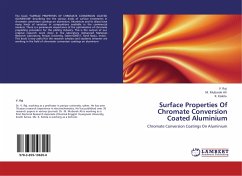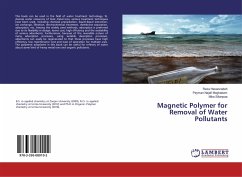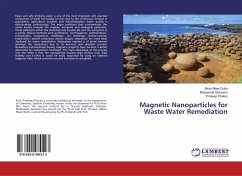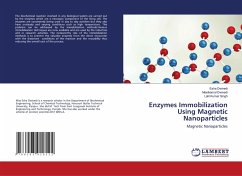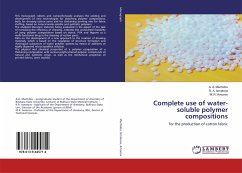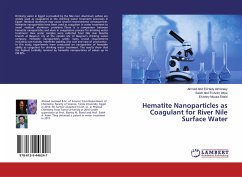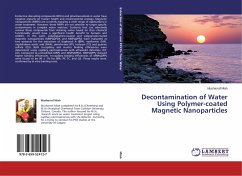
Decontamination of Water Using Polymer-coated Magnetic Nanoparticles
Versandkostenfrei!
Versandfertig in 6-10 Tagen
36,99 €
inkl. MwSt.

PAYBACK Punkte
18 °P sammeln!
Endocrine disrupting compounds (EDCs) and pharmaceuticals in water have negative impacts on human health and environmental ecology. Magnetic nanoparticles (MNPs) are currently enjoying a wide range of applications in water treatment. However, these MNPs are not selective to target specific contaminants in complex water matrices. Sorbents that can selectively remove these compounds from drinking water based on their chemical functionality would have a significant health benefit to humans and wildlife. In this work, polydopamine-coated and polypyrrole-coated magnetic nanoparticles (MNPs@PDA and ...
Endocrine disrupting compounds (EDCs) and pharmaceuticals in water have negative impacts on human health and environmental ecology. Magnetic nanoparticles (MNPs) are currently enjoying a wide range of applications in water treatment. However, these MNPs are not selective to target specific contaminants in complex water matrices. Sorbents that can selectively remove these compounds from drinking water based on their chemical functionality would have a significant health benefit to humans and wildlife. In this work, polydopamine-coated and polypyrrole-coated magnetic nanoparticles (MNPs@PDA and MNPs@PPy) were evaluated as two sorbents for the extraction of bisphenol A (BPA), metformin (MF), naphthalene acetic acid (NAA), phenformin (PF), triclosan (TC) and quinine sulfate (QS). Both in-capillary and in-vitro binding efficiencies were determined using capillary electrophoresis with ultraviolet detection (CE-UV). Compared to unmodified MNPs and MNPs@PDA, MNPs@PPy showed higher binding efficiencies. In-capillary binding efficiencies of MNPs@PPy were found to be 99 ± 1% for BPA, PF, TC, and QS. These results were confirmed by in-vitro binding tests.



